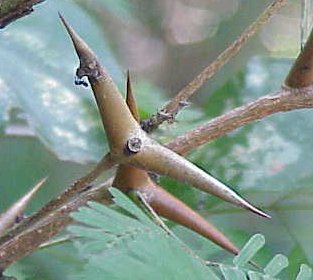
This intrigued the scientists who were bested by the ants, so they wanted to find out whether or not it is really possible for the tiny Crematogaster ants to actually defend the tree from the world’s largest land animal. Thus, they conducted a follow-up study, and the results were incredible!
According to Science Now, ecologists Todd Palmer and Jacob Goheen studied six orphaned elephants that lived in a Kenyan rehabilitation center that had a reasonably natural setting. They took branches off two species of Acacia tree – one that hosts the ants and one that does not. They then removed the ants from the branches that had ants on them. At this point, then, they had branches from two different species of Acacia tree, and all the branches were ant-free.
They then dipped half of the branches from each species into a vat of Crematogaster ants. So now they had some branches from both species with ants, and some branches from both species without ants. When these branches were offered to the elephants, the elephants ate branches from both species, but they ate only the ant-free branches. So the elephants didn’t eat based on the species of the tree. They ate based on whether or not the pesky ants were on the branches!
To further test whether or not it was really the ants that were protecting the trees, they went into the wild and used smoke to chase ants off several Acacia trees. They then monitored the trees, allowing different numbers of ants to inhabit different trees. After a full year, the trees that housed the highest number of ants per square meter of tree were untouched by elephants, while those that housed a small number of ants per square meter had been eaten by elephants. In fact, the density of ants on the tree determined how much of the tree had been eaten.
So the ants really are protecting the trees from elephants! This has amazing consequences for the ecosystem as a whole. Think about it. Elephants can devastate forests by overgrazing, which can actually turn forests into prairies. These tiny ants are powerful enough, however, to keep that from happening. The largest land animals in the world are simply no match for them!
As ecologist Lee Dyer, who was not involved in the study, notes, the implications of this research could be worldwide. Who would have ever thought that tiny ants can prevent deforestation by large land animals? Now that we know this happens on the African savanna, it is reasonable to assume that it probably happens in other ecosystems as well.
The more we learn about God’s creation, the more I am stunned by how it is all so intricately designed. Even a mighty creature like the elephant must answer to the lowly ant so that the overall ecosystem can flourish. Such systems don’t develop because the elephants and ants are simply competing for survival. They develop because they have been designed for the good of the entire ecosystem.

Good day Dr. Wile. I like reading your articles even though I don’t comment much.
However, regarding this article on the ants protecting trees, I remember reading somewhere some time ago (a few years ago), I ‘don’t have details, about certain trees in a forest, that when buck start eating on the trees, the trees start giving off something like spore. This “spore” is carried by the wind and picked up by surrounding tress which then react to this and consequently also start giving off “spore”, etc.
It is not long before the buck stop eating further in the forest because the trees started giving off something in their leaves which made the leaves unpleasent to eat.
I cannot verify the details of this. If this is true, do have any details about this?
Great articles that you post. My God bless you.
Thank you
Charles, thanks so much for your kind words. I am not sure this is exactly what you mean, but many trees produce chemicals that are in a class called “tannins.” These chemicals taste bitter, are astringent (they constrict tissue), and can interfere with digestion in many animals. As a result, trees that produce a lot of tannins tend to have less damage from herbivores than those that produce few tannins. The tannins also serve as a means of communication. As parts of a tree are destroyed by an herbivore, some of the tannins that were in the tissue evaporate. Other trees detect the tannins in the air and start to produce more tannins themselves. This, of course, provides more protection for them.